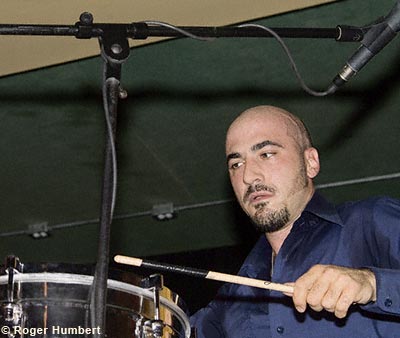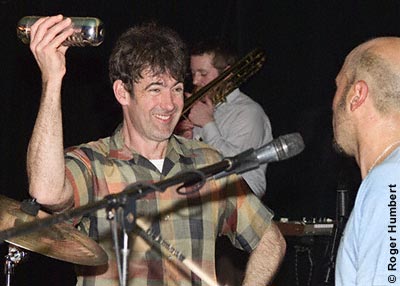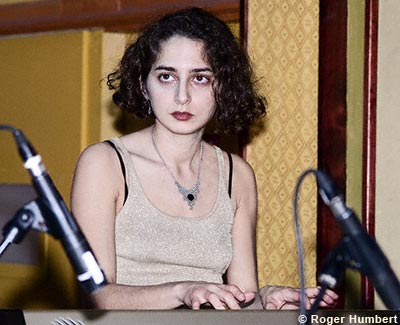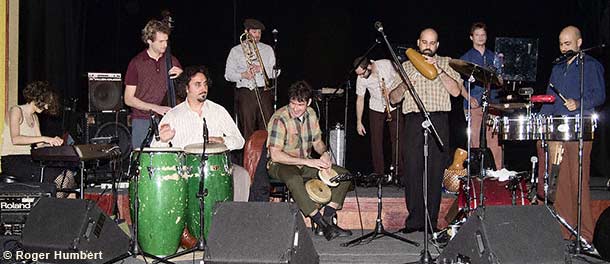|
Rei Alvarez makes a point of writing meaningful lyrics and “Hermano”, a song about the relationship between brothers seems to be one of his favourites. The dancers had warmed up nicely by this time and were filling the floor but, as during the rest of the evening, there were also many people simply listening to the lyrics and/or to the music, vintage salsa but with arresting new twists. No matter what this band did, you could dance to it, but sometimes you had to just listen and watch.
The set continued with a Charlie Palmieri tune, a percussive extravaganza with right-on horn shots and lots of room for Marlysse to play. A whole variety of Latin sounds appeared in the following songs, from Afro-Cuban, Columbian and even Brazilian. The only slow tune in the set was a jewel of soulful singing, with a lyrical trumpet and wonderful harmonies marched inexorably onward by stick-beaten timbales. Boleros and ballads need not be dragging or schmaltzy.
Still, overall, it was in the second set that the Salsa Machine really glowed with its own unique light. Even the most avid dancers stopped at times just to listen. At others, the experimentation on stage seemed to spur creative surges on the dance floor. This set featured some very hard-hitting salsa, some reggaeton currents, an exciting conga solo, some jaw-dropping work by Giustino Riccio on timbales, a stretch of Arabian perfect-for-belly-dancing rhythm, Afro-Cuban percussion with chant, salsa dripping with sensuality and a hint of rock. The psychedelic 60s and 70s with Korg synthesizer and Fender Rhodes sounds were hugely present but in the very best of ways. To put it mildly, I am not fond of most electronic keyboard and synthesizer 'effects' I’ve heard in Latin music, but this, in a word, was fabulous. It was clearly descended from Miles Davis at the Isle of Wight, Charlie Palmieri goes electric, Santana and Weather Report, even the Doors, but freshly adventurous.
|
|

Giustino Riccio |
|

Jim Thompson |
|

Marlysse Simmons |
|







